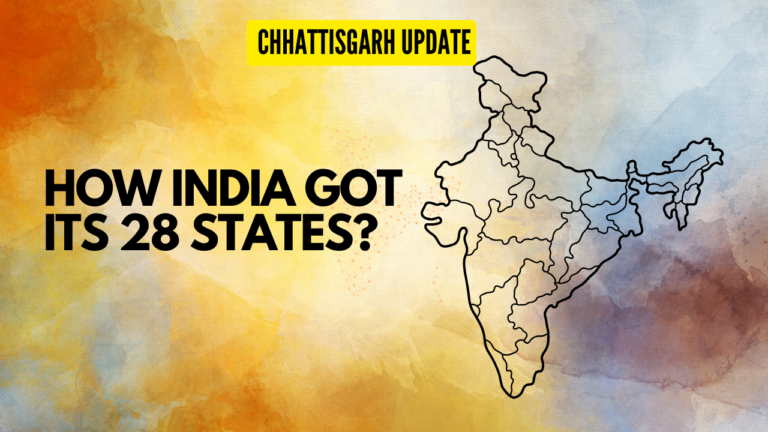Chhattisgarh, a state nestled in the heart of Central India, offers a unique blend of rich history, natural beauty, and vibrant culture. In this article, we will delve into the various facets of Chhattisgarh, from its geographical features to its historical significance and thriving economy.
Geographical Overview
Chhattisgarh is the ninth-largest state in India in terms of land area. It shares borders with seven other states: Uttar Pradesh to the north, Madhya Pradesh to the northwest, Maharashtra to the southwest, Jharkhand to the northeast, Odisha to the east, and Telangana and Andhra Pradesh to the south. The state’s capital is Raipur, which became its designated capital on November 1, 2000, when Chhattisgarh was granted statehood.
Chhattisgarh is the ninth-largest state in India in terms of land area. It shares borders with seven other states: Uttar Pradesh to the north, Madhya Pradesh to the northwest, Maharashtra to the southwest, Jharkhand to the northeast, Odisha to the east, and Telangana and Andhra Pradesh to the south. The state’s capital is Raipur, which became its designated capital on November 1, 2000, when Chhattisgarh was granted statehood.
Etymology
The name “Chhattisgarh” has several theories regarding its origin. Some believe it stems from the 36 ancient forts in the region, while others suggest it may be a corrupted form of “Chedisgarh,” indicating an “Empire of the Chedis.” Nevertheless, the name “Chhattisgarh” became popular during the Maratha Empire and was first officially used in 1795.
The name “Chhattisgarh” has several theories regarding its origin. Some believe it stems from the 36 ancient forts in the region, while others suggest it may be a corrupted form of “Chedisgarh,” indicating an “Empire of the Chedis.” Nevertheless, the name “Chhattisgarh” became popular during the Maratha Empire and was first officially used in 1795.
Historical Significance
Chhattisgarh boasts a rich historical heritage. The region was mentioned in ancient texts like the Ramayana and Mahabharata, where it was known as Dakshina Kosala. During the medieval period, it was part of the Sambalpur Kingdom of Odisha. Later, it came under Maratha rule and eventually became a part of British India.
Chhattisgarh boasts a rich historical heritage. The region was mentioned in ancient texts like the Ramayana and Mahabharata, where it was known as Dakshina Kosala. During the medieval period, it was part of the Sambalpur Kingdom of Odisha. Later, it came under Maratha rule and eventually became a part of British India.
Administrative Divisions
Chhattisgarh is divided into five administrative divisions: Bastar, Durg, Raipur, Bilaspur, and Surguja. These divisions are further subdivided into districts, each with its unique cultural and geographical attributes.
Major CitiesRaipur, the state capital
Bhilai-Durg, an industrial hub
Bilaspur, known for its educational institutions
Korba, a growing urban center
Ambikapur, a key city in Surguja division
Jagdalpur, the heart of Bastar
Rajnandgaon, a prominent cultural center
Baikunthpur in Koriya division
Surajpur, known for its scenic beauty
Janjgir-Naila, a significant town in Janjgir–Champa district
Mungeli, famous for its agricultural activities
Kawardha in Kabirdham division
Bemetara, with Nawagarh and Saja
Balod in Balod district
Baloda Bazar-Bhatapara, a blend of cultures
Gariaband, rich in tribal heritage
Mahasamund, with Saraipali and Bagbahra
Dhamtari, a hub of religious festivals
Bijapur, in the heart of Bastar
Narayanpur, a serene destination
Kanker, home to Bhanupratapur and Pakhanjore
Jagdalpur, the cultural capital of Bastar
Dantewada, featuring Kirandul and Geedam
Kondagaon, known for its tribal traditions
Sukma, with Tadmetla and Murtonda
Gaurela-Pendra-Marwahi, a region with diverse attractions
Manendragarh-Chirmiri-Bharatpur, an area rich in natural beauty
Mohla Manpur, a place of historical significance
Sakti, known for Sonthi
Sarangarh-Bilaigarh, a region steeped in history
Khairagarh-Chhuikhadan-Gandai, with Chhuikhadan
Chhattisgarh is divided into five administrative divisions: Bastar, Durg, Raipur, Bilaspur, and Surguja. These divisions are further subdivided into districts, each with its unique cultural and geographical attributes.
Major CitiesRaipur, the state capital
Bhilai-Durg, an industrial hub
Bilaspur, known for its educational institutions
Korba, a growing urban center
Ambikapur, a key city in Surguja division
Jagdalpur, the heart of Bastar
Rajnandgaon, a prominent cultural center
Baikunthpur in Koriya division
Surajpur, known for its scenic beauty
Janjgir-Naila, a significant town in Janjgir–Champa district
Mungeli, famous for its agricultural activities
Kawardha in Kabirdham division
Bemetara, with Nawagarh and Saja
Balod in Balod district
Baloda Bazar-Bhatapara, a blend of cultures
Gariaband, rich in tribal heritage
Mahasamund, with Saraipali and Bagbahra
Dhamtari, a hub of religious festivals
Bijapur, in the heart of Bastar
Narayanpur, a serene destination
Kanker, home to Bhanupratapur and Pakhanjore
Jagdalpur, the cultural capital of Bastar
Dantewada, featuring Kirandul and Geedam
Kondagaon, known for its tribal traditions
Sukma, with Tadmetla and Murtonda
Gaurela-Pendra-Marwahi, a region with diverse attractions
Manendragarh-Chirmiri-Bharatpur, an area rich in natural beauty
Mohla Manpur, a place of historical significance
Sakti, known for Sonthi
Sarangarh-Bilaigarh, a region steeped in history
Khairagarh-Chhuikhadan-Gandai, with Chhuikhadan
Economy
Chhattisgarh’s economy is a vibrant one, with a Gross State Domestic Product (GSDP) estimated at 5.09 lakh crore (US$64 billion) for 2023-24. This places the state as the 17th largest economy in India. The economy has been growing steadily, with a growth rate of 8% in 2020-21. Key sectors contributing to the GSDP are agriculture (32%), industry (32%), and services (36%).
Chhattisgarh’s economy is a vibrant one, with a Gross State Domestic Product (GSDP) estimated at 5.09 lakh crore (US$64 billion) for 2023-24. This places the state as the 17th largest economy in India. The economy has been growing steadily, with a growth rate of 8% in 2020-21. Key sectors contributing to the GSDP are agriculture (32%), industry (32%), and services (36%).
Agriculture
Agriculture forms the backbone of Chhattisgarh’s economy, engaging a significant portion of the population. The state’s fertile lands produce a variety of crops, including rice, maize, millets, and pulses. Despite traditional farming practices, there is potential for modernization and diversification in agriculture to increase productivity.
Agriculture forms the backbone of Chhattisgarh’s economy, engaging a significant portion of the population. The state’s fertile lands produce a variety of crops, including rice, maize, millets, and pulses. Despite traditional farming practices, there is potential for modernization and diversification in agriculture to increase productivity.
Chhattisgarh is often referred to as the “rice bowl of central India,” emphasizing the importance of rice cultivation in the region. Efforts are being made to promote crop diversification and introduce modern farming techniques to boost agricultural output.
Conclusion
Chhattisgarh, with its diverse landscapes, rich history, and a growing economy, is a state with immense potential. Its journey from being a part of Madhya Pradesh to gaining statehood in 2000 is a testament to its unique identity and cultural heritage. As the state continues to progress, it offers a glimpse into the future of Central India, where tradition and modernity coexist harmoniously.
Chhattisgarh, with its diverse landscapes, rich history, and a growing economy, is a state with immense potential. Its journey from being a part of Madhya Pradesh to gaining statehood in 2000 is a testament to its unique identity and cultural heritage. As the state continues to progress, it offers a glimpse into the future of Central India, where tradition and modernity coexist harmoniously.



